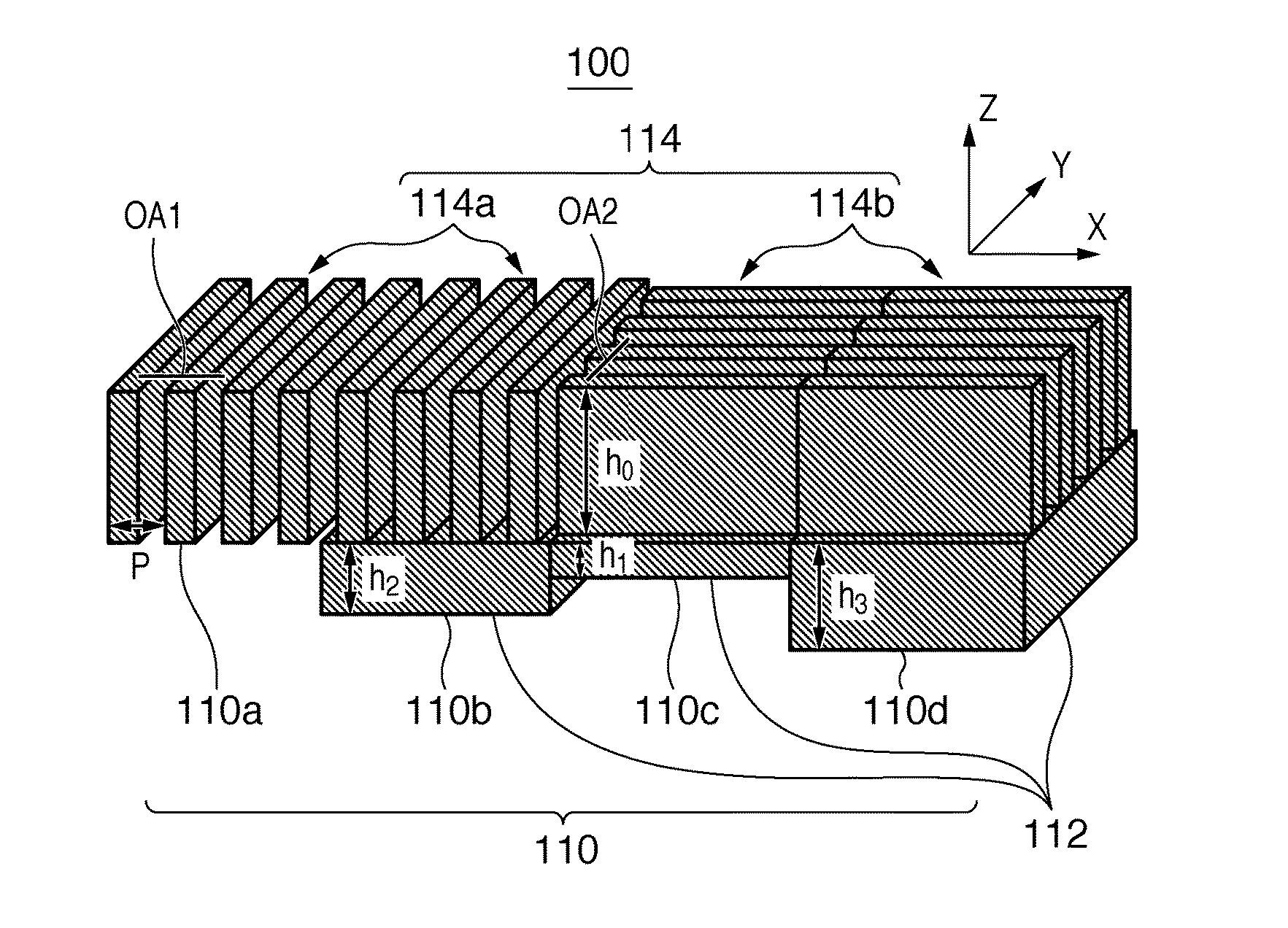Computer generated hologram, exposure apparatus and device fabrication method
a technology of exposure apparatus and hologram, which is applied in the direction of hologram nature/properties, printing, instruments, etc., can solve the problems of reducing the transmittance of general glass materials, difficult to further shorten the current exposure light wavelength, and difficulty in further increasing the na of the projection optical system available, so as to reduce the illuminance variation and light loss, and the structure is thin.
- Summary
- Abstract
- Description
- Claims
- Application Information
AI Technical Summary
Benefits of technology
Problems solved by technology
Method used
Image
Examples
first embodiment
[0073]A design example of a computer generated hologram which forms a phase distribution including two phases assuming an annular light intensity distribution formed by S-polarized light as a target image will be explained in the first embodiment. More specifically, a case in which a computer generated hologram 100 forms an annular light intensity distribution (target image) LI as shown in FIG. 4 will be explained. FIG. 4 is a view showing an example of an annular light intensity distribution (target image) LI formed by the computer generated hologram 100.
[0074]Polarization directions PD in the light intensity distribution LI shown in FIG. 4 include a plurality of polarization directions PD1 to PD4, and are parallel to the circumferential direction of concentric circles (i.e., correspond to S-polarization). How to design a computer generated hologram 100 which forms a light intensity distribution LI as shown in FIG. 4 will be explained using cells 110a to 110d shown in FIG. 2.
[0075]...
second embodiment
[0085]A design example of a computer generated hologram which forms a phase distribution including four phases assuming an annular light intensity distribution formed by S-polarized light as a target image will be explained in the second embodiment. More specifically, a case in which a computer generated hologram 100 forms an annular light intensity distribution (target image) LI as shown in FIG. 4 will be explained, as in the first embodiment.
[0086]FIG. 9A is a chart showing the phase distribution of a computer generated hologram designed by DBS to be compatible with the intensity and phase of the X-polarized light component shown in FIGS. 5A and 6A, respectively. FIG. 9B is a chart showing the phase distribution of a computer generated hologram designed by DBS to be compatible with the intensity and phase of the Y-polarized light component shown in FIGS. 5B and 6B, respectively. The phase distributions of the computer generated hologram shown in FIGS. 7A and 7B are represented by ...
third embodiment
[0117]In the third embodiment, an exposure apparatus 1 to which the computer generated hologram 100 according to the present invention is applied will be explained below with reference to FIG. 13. FIG. 13 is a view showing the arrangement of the exposure apparatus 1 according to one aspect of the present invention.
[0118]In this embodiment, the exposure apparatus 1 is a projection exposure apparatus which transfers the pattern of a reticle 20 onto a wafer 40 by the step & scan scheme. However, the exposure apparatus 1 can adopt the step & repeat scheme or another exposure scheme.
[0119]As shown in FIG. 13, the exposure apparatus 1 includes an illumination apparatus 10, a reticle stage (not shown) for supporting the reticle 20, a projection optical system 30, and a wafer stage (not shown) for supporting the wafer 40.
[0120]The illumination apparatus 10 illuminates the reticle 20 on which a circuit pattern to be transferred is formed, and includes a light source 16 and illumination optic...
PUM
 Login to view more
Login to view more Abstract
Description
Claims
Application Information
 Login to view more
Login to view more - R&D Engineer
- R&D Manager
- IP Professional
- Industry Leading Data Capabilities
- Powerful AI technology
- Patent DNA Extraction
Browse by: Latest US Patents, China's latest patents, Technical Efficacy Thesaurus, Application Domain, Technology Topic.
© 2024 PatSnap. All rights reserved.Legal|Privacy policy|Modern Slavery Act Transparency Statement|Sitemap



